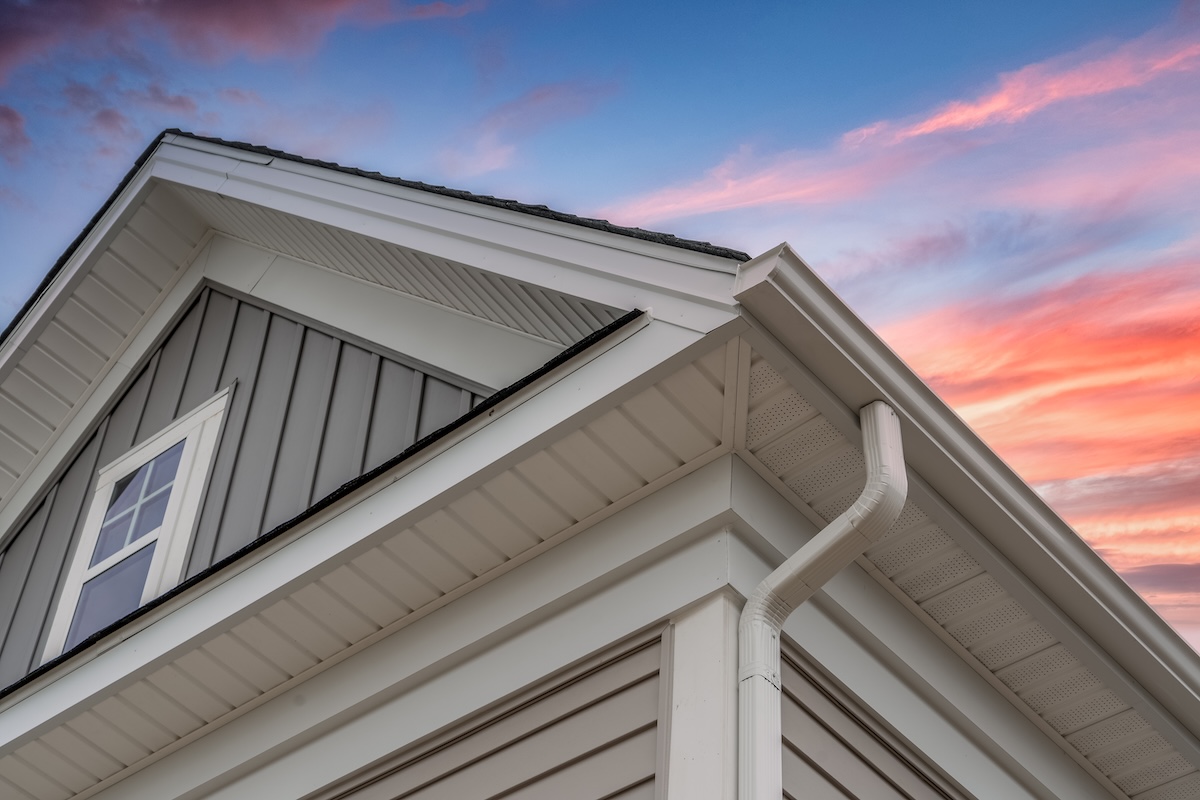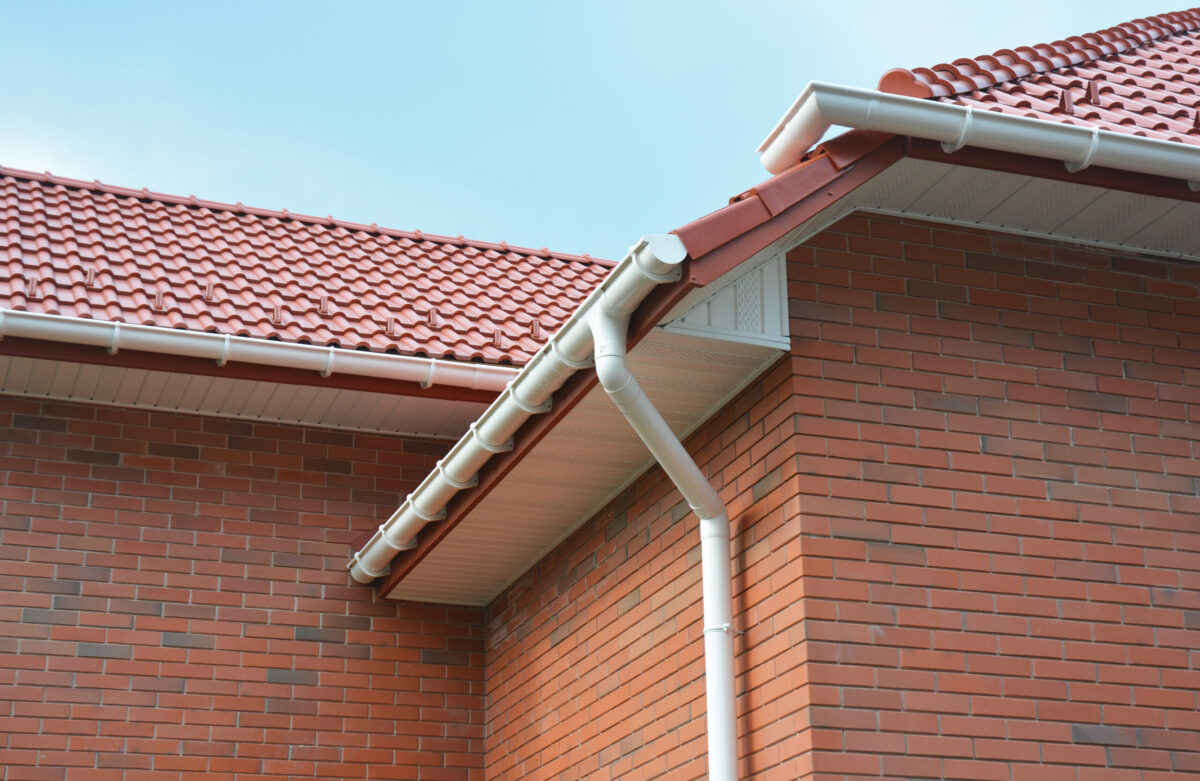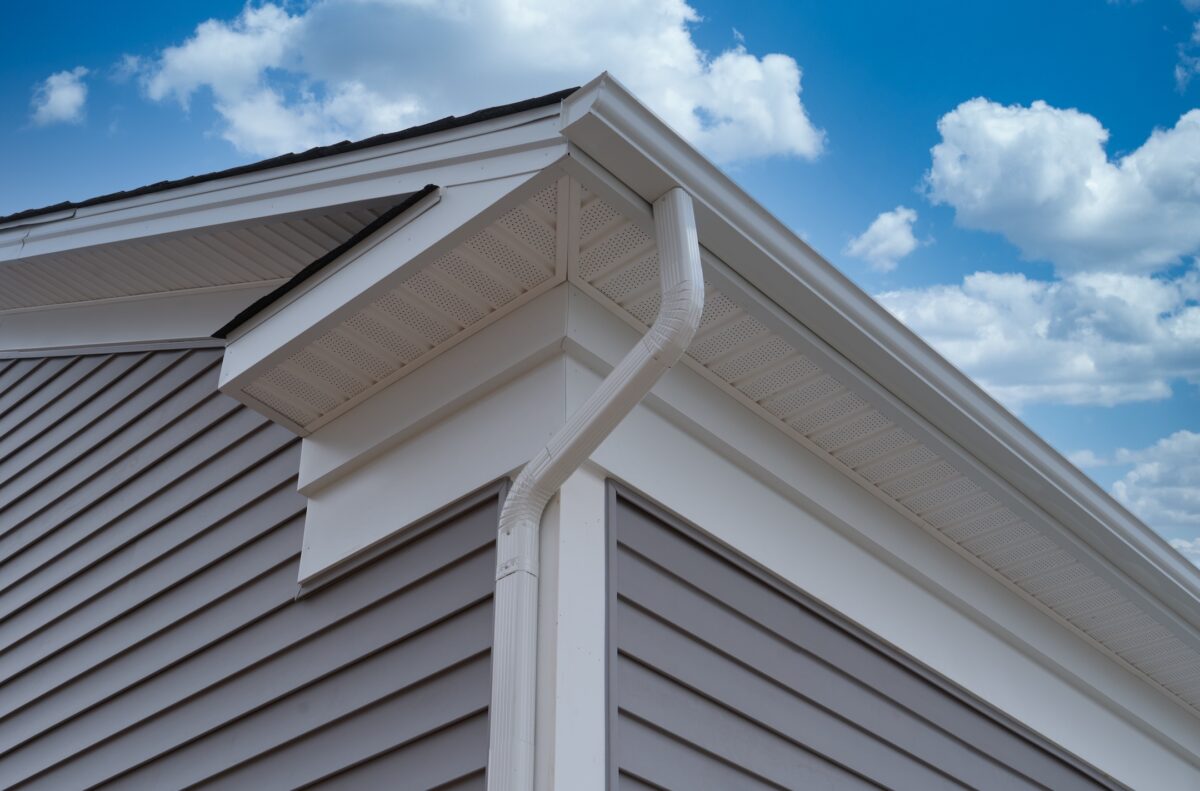When you look up at your home’s roofline, you might notice the horizontal surface that connects your roof’s edge to your home’s exterior wall. That’s called a soffit, and it plays a crucial role in protecting your home from the elements while maintaining proper ventilation. Understanding this essential roof component can help you make informed decisions about your home’s maintenance and potential repairs.
This comprehensive guide will cover:
- What soffits are and their primary functions
- Why proper soffit maintenance is essential for your home
- Different types of soffits and their benefits
- Common soffit problems and solutions
- How to maintain your soffits effectively
🏠 Why Soffits Are Important for Your Home

Soffits serve multiple critical functions that directly impact your home’s structural integrity and energy efficiency. These often-overlooked components work behind the scenes to protect your investment and maintain a comfortable living environment.
Understanding the importance of soffits helps you recognize when they need attention and why investing in quality materials matters. Here are the key benefits that properly functioning soffits provide:
- Ventilation control – Soffits with vents allow fresh air to enter your attic space, preventing moisture buildup and heat accumulation
- Weather protection – They shield your roof’s structural elements from rain, snow, and wind damage
- Pest prevention – Properly installed soffits block entry points for birds, bats, squirrels, and insects
- Energy efficiency – Good ventilation through soffits helps regulate attic temperatures, reducing heating and cooling costs
- Curb appeal – Clean, well-maintained soffits enhance your home’s overall appearance and value
🔎 5 Essential Things to Know About Soffits

Understanding the basics of soffit construction and function will help you better maintain your home’s exterior. Each aspect of soffit design contributes to your home’s overall performance and longevity.
These fundamental concepts will give you the knowledge needed to identify potential issues and communicate effectively with roofing professionals when needed.
1. What Exactly Is a Soffit?
A soffit is the exposed surface beneath the overhanging section of a roof eave. It spans the gap between your home’s exterior wall and the edge of the roof, creating a finished appearance while serving important functional purposes.
- Soffits can be made from various materials including vinyl, aluminum, wood, or fiber cement
- They’re typically installed during the roofing process as part of the overall eave system
2. Vented vs. Non-Vented Soffits
Soffits come in two main categories based on their ventilation capabilities. The choice between vented and non-vented depends on your home’s specific ventilation needs and local building codes.
- Vented soffits contain perforations or slots that allow air circulation into the attic space
- Non-vented soffits provide weather protection without airflow, used in areas where ventilation isn’t needed
3. Common Soffit Materials and Their Benefits
Different materials offer varying levels of durability, maintenance requirements, and aesthetic appeal. Your choice should consider your local climate, budget, and long-term maintenance preferences.
- Vinyl soffits – Low maintenance, cost-effective, available in multiple colors
- Aluminum soffits – Durable, fire-resistant, won’t rot or warp over time
4. Soffit Installation Requirements
Proper installation ensures your soffits perform effectively and last for years. Professional installation typically involves precise measurements and coordination with other roofing components.
- Soffits must be properly secured to prevent sagging or wind damage
- Ventilation calculations ensure adequate airflow for your specific home size
5. Signs Your Soffits Need Attention
Regular inspection helps you catch problems early before they lead to more extensive damage. Knowing what to look for can save you money and protect your home’s integrity.
- Visible damage – Cracks, holes, or sagging sections indicate immediate repair needs
- Pest activity – Evidence of birds, insects, or small animals suggests compromised barriers
🔧 Soffit Maintenance and Repair Considerations

Maintaining your soffits doesn’t require extensive expertise, but it does need consistent attention and occasional professional intervention. Regular care extends their lifespan and ensures they continue protecting your home effectively.
Proper maintenance involves both preventive measures and prompt attention to any issues that arise. Understanding when to handle tasks yourself versus calling professionals helps you make cost-effective decisions.
Routine Cleaning and Inspection
Clean soffits are essential not only for maintaining a polished appearance but also for ensuring they function as intended. Regular cleaning prevents debris buildup that can block ventilation, reducing airflow, or hide potential issues like mold or pest infestations. Keeping up with cleaning and inspections helps to prolong the life of your soffits and ensures that small problems don’t turn into costly repairs down the line.
Monthly visual checks should include:
- Looking for signs of water damage or staining: Watch for discoloration, streaks, or damp spots that might indicate leaks or moisture seeping in, which can lead to rot or mold growth if ignored.
- Checking that vents remain clear of debris: Ensure that vents are free from leaves, dirt, or any blockages. Clear vents are crucial for maintaining proper airflow and preventing moisture buildup in your attic.
- Noting any loose or damaged sections: Inspect for cracks, warping, or sections that may have come loose. These issues can expose your home to pests or further structural damage if not addressed quickly.
Professional Repair and Replacement
While routine maintenance can handle many issues, some soffit problems require the expertise of trained professionals to ensure they are resolved safely and effectively. Attempting to repair significant damage without the proper tools or knowledge can worsen the situation or compromise the structural integrity of your roof. Professionals have the experience and equipment to address these more serious concerns.
Call professionals for:
- Extensive damage from storms or age: Severe damage caused by heavy storms, high winds, or years of wear and tear often requires specialized tools and materials for proper restoration.
- Structural issues affecting roof support: When soffits are connected to critical roof components, damage can impact the stability of the roof itself. Trained professionals can assess and repair these issues to maintain your home’s structural integrity.
- Ventilation system modifications or upgrades: If your home needs improved ventilation to reduce energy costs or prevent moisture buildup, professionals can install or upgrade soffit vents to ensure your system functions efficiently and meets your home’s needs.
📞 Protect Your Home with Expert Soffit Services
Your home’s soffits play a vital role in maintaining structural integrity, energy efficiency, and overall comfort. Regular maintenance and prompt attention to problems ensure these important components continue protecting your investment for years to come.
When soffit issues arise, addressing them quickly prevents more extensive and costly problems. Professional assessment can identify potential concerns before they impact other parts of your roofing system.
Ready to ensure your soffits are in top condition? Contact Maumee River Roofing today for a comprehensive inspection and expert recommendations tailored to your home’s specific needs.
